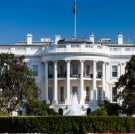Historian factchecks Trump’s Nato criticism as ex-president tells Europe to ‘PAY UP!’

Donald Trump drew widespread condemnation after his recent comments that he would encourage Russia to invade Nato countries that don’t spend enough on defence.
A leading historian, Timothy Snyder, noted on X on Tuesday that when it comes to aid to Ukraine, the US is lagging behind some European countries when it comes to per capita assistance to the wartorn country.
After President Joe Biden called Mr Trump’s Nato comments “un-American”, Mr Trump wrote on Truth Social on: “Could somebody please inform our uninformable President that NATO has to pay their bills!
“They are right now paying a small fraction of what we are for the Disaster in Ukraine which, if we had a real President, would never have happened. There is probably a $150 Billion difference. They should equalize with the U.S. – FAST! The European Nations, when combined, have approximately the same size Economy as we do. They have the money. PAY UP!” he added.
Mr Snyder, a Yale history professor and an expert on eastern Europe and the Holocaust, wrote on Tuesday: “Speaking of paying our share… If the US gave as much/GDP to Ukraine as does Denmark or Slovakia, Ukraine would win easily. If we gave as much/GDP to Ukraine as Estonia does, Ukraine would likely have won long ago. Ukrainian victory is what matters and we are the slackers.”
While the US has given the most in total military, European Union institutions have given more when humanitarian and particularly financial aid is included.
EU institutions have given a total of 77.1bn euro (82.7bn US dollars) in aid to Ukraine, while the US has given 71.4 bn euro (76.6bn US dollars), according to the Kiel Institute for the World Economy. Germany, which is part of the EU, has given just over 20bn euro (21.5bn US dollars), the vast majority – more than 17bn euro – of it being military aid.
Germany’s stunning turnaround, dubbed Zeitenvende by German Chancellor Olaf Scholz, in its attitude to support in Ukraine came after initial reluctance, unwilling as the country was to give up its formerly close, by European standards, relationship to Russia, which partly stems from guilt associated with Operation Barbarossa – Nazi Germany’s invasion of the Soviet Union during World War II which culminated with the gruelling battle of Stalingrad, the city now called Volgograd.
“The world is facing a Zeitenwende: an epochal tectonic shift. Russia’s war of aggression against Ukraine has put an end to an era,” Mr Scholz wrote in Foreign Affairs in December 2022.
“The Zeitenwende goes beyond the war in Ukraine and beyond the issue of European security. The central question is this: How can we, as Europeans and as the European Union, remain independent actors in an increasingly multipolar world?” he added.
“In today’s densely interconnected world, the goal of advancing peace, prosperity, and human freedom calls for a different mindset and different tools. Developing that mindset and those tools is ultimately what the Zeitenwende is all about,” he concluded.
Looking at per capita support, the US comes in 30th place, with all 29 countries ahead being European, including all 27 members of the European Union, according to data gathered by the Kiel Institute.
Atop the list is Lithuania, which has given 1.8 per cent as a share of its GDP to Ukraine – 1.4 per cent in bilateral aid and 0.4 per cent as its share of EU aid.
Estonia is listed in second place, Norway – which is not part of the EU – in third, having handed over 1.6 per cent in aid as a share of its GDP. The rest of the top 10 is made up of Denmark, Latvia, Slovakia, Poland, the Netherlands, Finland, and Czechia.
While the US has given the most total military aid of any country – 43.9 bn euro (47bn US dollars) – it’s vastly outstripped by EU countries and EU institutions when it comes to all kinds of aid.
In total, EU countries and EU institutions gave a combined 133.3bn euro (143bn US dollars) compared to 71.4bn euro (76.6bn US dollars) – just over half as much.
This is despite the US economy being significantly larger than that of the European Union.
In 2021, the US GDP was 23.32 trillion US dollars, according to the World Bank.
The EU states on its website that “the total value of all goods and services produced (gross domestic product or GDP) in the EU in 2021 was € 14.5 trillion”, which is about 15.5tn in US dollars.
It should however be noted that the US has played a massive role in European security ever since the Second World War.
In June 2022, the Pentagon said: “Since February 2022, DoD deployed or extended over 20,000 additional forces to Europe in response to the Ukraine crisis, adding additional air, land, maritime, cyber, and space capabilities, bringing our current total to more than 100,000 service members across Europe.”
Mr Trump’s Nato comments prompted an uproar among European officials, with some doubling down on the long-standing argument that it’s time for Europe to significantly boost its armed forces and military production to be able to back Ukraine on its own if the US withdraws from the conflict in the event of a second Trump term in the White House.





